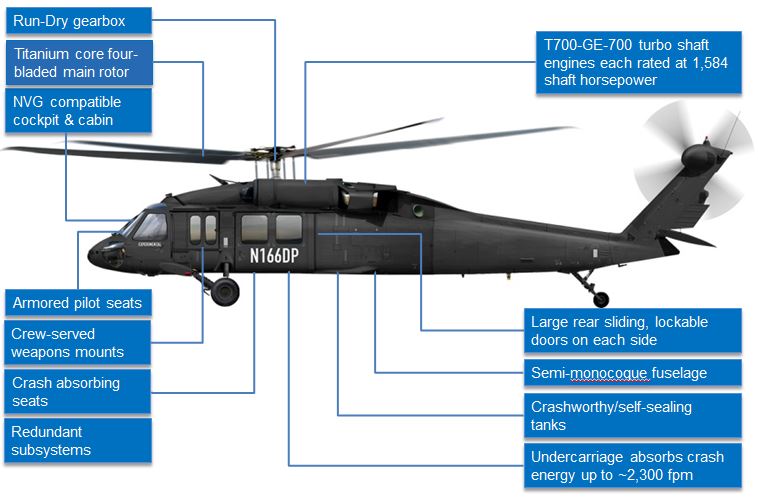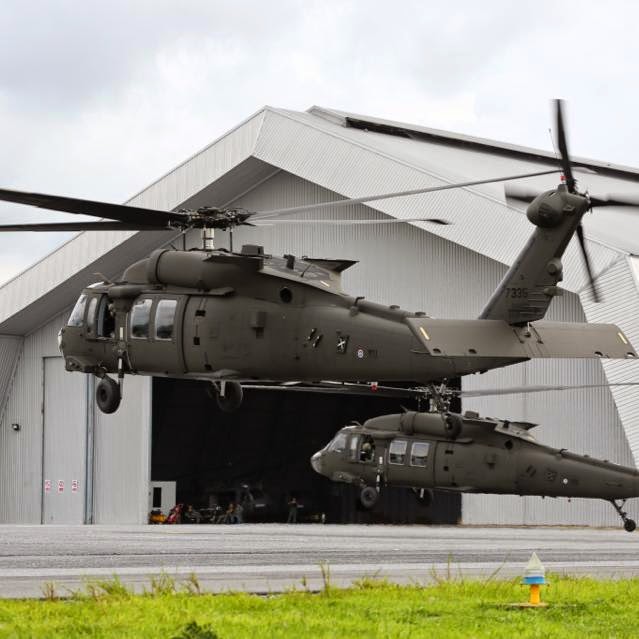Browsing Uh 60 Helicopter Rules and Conformity Demands

Regulatory Framework Summary
The regulatory structure controling UH-60 helicopter procedures includes a complex set of regulations and criteria established by aeronautics authorities. These laws are created to make sure the reliable and risk-free operation of UH-60 helicopters in numerous settings. The Federal Air Travel Administration (FAA) plays a main function in establishing and applying these policies, which cover a variety of functional aspects, consisting of airworthiness requirements, pilot qualifications, upkeep requirements, and functional procedures.
Conformity with these policies is important for helicopter drivers to preserve the highest degree of safety and functional integrity. Failing to follow these guidelines can result in significant repercussions, consisting of accidents, injuries, and governing sanctions. For that reason, helicopter operators should remain informed regarding the most up to date governing developments and make sure that their operations are in complete compliance with all suitable regulations and requirements.
Airworthiness Evaluations and regulations
Amidst the regulative framework regulating UH-60 helicopter operations, an important emphasis exists on conformity with Airworthiness Directives and carrying out complete examinations to promote safety and security criteria and functional integrity. Airworthiness Instructions (Advertisements) are provided by air travel authorities to deal with risky conditions in aircraft, including the UH-60 helicopter, and required specific activities to be taken by drivers or proprietors. Conformity with Advertisements is required, and failing to stick to these regulations can result in serious effects, consisting of grounding of the aircraft.
Regular assessments are critical to making certain the airworthiness of UH-60 helicopters. By adhering to a rigorous inspection program, drivers can spot and resolve potential problems promptly, thus boosting the safety and dependability of UH-60 helicopter procedures.
Pilot Qualifications and Training

Pilot training for UH-60 helicopters is comprehensive and covers a large range of subjects, including airplane systems, emergency treatments, navigation, and mission-specific training. In addition, pilots undergo simulator training to exercise various emergency situation scenarios in a regulated environment. This training assists pilots create the required abilities to deal with tough situations successfully.


Furthermore, recurring training and specialist advancement are necessary for UH-60 pilots to stay current with the current guidelines, modern technology, and finest methods. By investing in pilot credentials and training, drivers can improve safety, maximize efficiency, and guarantee compliance with governing demands in the operation of UH-60 helicopters.
Functional Limitations and Demands
Pilot qualifications and training function other as the structure for understanding the functional restrictions and requirements related to UH-60 helicopter procedures (uh 60). These operational constraints are implemented to make sure the safety of the team, passengers, and the aircraft itself. Functional limitations might include elements such as weather, weight limitations, altitude restrictions, and functional borders. It is important for pilots to be well-versed in these limitations to make educated decisions during flight procedures. In addition, conformity requirements, such as adhering to certain flight paths, interaction methods, and emergency treatments, are vital for keeping operational safety and security and regulatory compliance. Pilots have to stay present with all functional limitations and demands via regular training, rundowns, and reviews to reduce threats and ensure risk-free and reliable UH-60 helicopter operations. By focusing on adherence to these functional guidelines, pilots can enhance the general safety and security and effectiveness of their missions while maintaining governing criteria.
Emergency Treatments and Conformity Screening
Efficient learn this here now emergency procedures and comprehensive compliance screening are essential parts of keeping functional security and regulatory adherence in UH-60 helicopter operations. Emergency situation treatments include protocols for numerous circumstances, including engine failures, fires, hydraulic issues, and extra. Pilots and team members must be fluent in these treatments to react promptly and successfully in emergencies. Regular conformity testing ensures that the More Help helicopter fulfills all regulative requirements stated by air travel authorities. This testing entails complete evaluations, checks, and evaluations to validate that the aircraft is airworthy and in conformity with all appropriate regulations.
Compliance screening additionally reaches tools onboard the UH-60, such as communication systems, navigating tools, and security equipment. Ensuring that all devices is functioning properly and fulfills regulatory requirements is essential for risk-free procedures. In addition, compliance testing might involve simulations of emergency situations to analyze the crew's action and the helicopter's efficiency under stress. By prioritizing emergency treatments and conformity screening, UH-60 operators can reduce dangers and show their dedication to safety and regulatory compliance.
Final Thought
In final thought, adherence to regulative structure, conformity with airworthiness regulations, pilot qualifications and training, functional limitations, and emergency procedures are essential for navigating the laws and requirements of operating a UH-60 helicopter. uh 60. It is vital for drivers to prioritize safety and security and ensure full compliance with all relevant laws to keep the airworthiness and operational integrity of the aircraft
Browsing the governing landscape surrounding UH-60 helicopter operations requires a nuanced understanding of the complex web of regulations and conformity requirements.Conformity with these policies is essential for helicopter operators to keep the highest possible degrees of security and operational honesty.In the middle of the regulative framework governing UH-60 helicopter procedures, an essential emphasis lies on conformity with Airworthiness Directives and carrying out comprehensive inspections to promote security standards and functional dependability.Effective emergency situation procedures and detailed compliance testing are important elements of keeping operational safety and security and regulative adherence in UH-60 helicopter operations. Routine conformity testing ensures that the helicopter satisfies all regulatory demands established forth by air travel authorities.